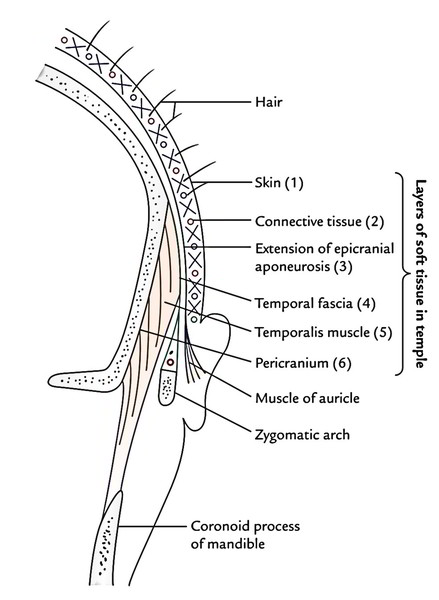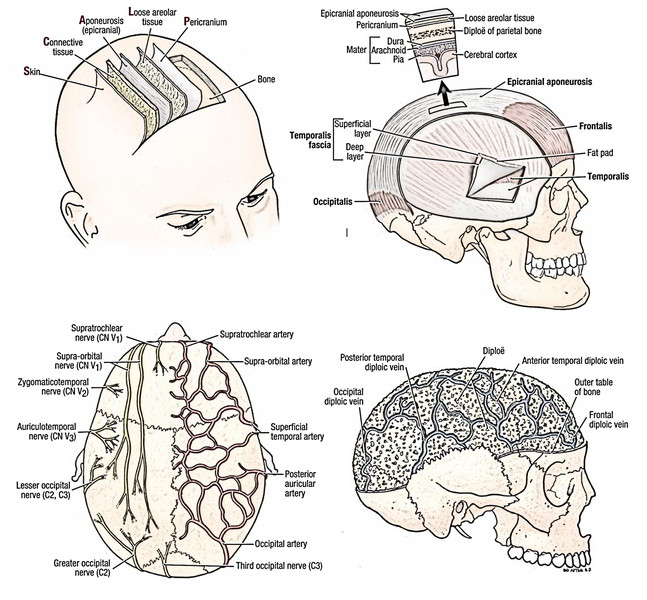The area between the superior temporal line and zygomatic arch, on the side of the skull is called temple. The fact that with age (i.e., time) greying of hair happen first in this area (tempus = time) was the reason for naming it the temple.
Layers of Soft Tissue in the Temple

Temple: Layers of Soft Tissue
There are 6 layers of soft tissue in the region of temple. From superficial to deep, these are:
- Skin.
- Connective tissue.
- Expansion of epicranial aponeurosis.
- Temporal fascia.
- Temporalis muscle.
- Pericranium.
1. Skin and connective tissue: These 2 layers are same as in the region of the entire scalp.
2. Expansion of epicranial aponeurosis: It gives origin to the auricularis anterior and auricularis superior muscles of the auricle.
3. Temporal fascia: It creates a roof over temporal fossa. It’s connected above to the temporal line and below to the zygomatic arch. Inferiorly the temporal fascia divides into 2 layers that are connected to the inner and outer lips of the zygomatic arch. A small gap between both layers includes (a) fat, (b) a branch from superficial temporal artery and (c) zygomaticotemporal nerve. The superficial surface of temporal fascia is related to: (a) superficial temporal vessels, (b) auriculotemporal nerve and (c) temporal branches of the facial nerve. The deep surface of temporal fascia supplies origin to some fibres of temporalis muscle.
4. Temporalis muscle: This large fan-shaped muscle originates from the floor of the temporal fossa and inner aspect of the temporal fascia. Its fibres converge inferiorly and pass deep to the zygomatic arch to be added into the coronoid process of mandible.
5. Pericranium: This layer is same as in the region of the entire scalp.

Temple: 6 Layers from Deep to Superficial
Clinical Significance of Temple
The temporal fascia is silvery-white thick fibrous sheet that is more or less aponeurotic in character. It’s the thickest fascia within the body. Morphologically, it represents a shell of a bone. In some species (example, tortoise), it’s replaced by bone to make the temporal fossa a bony tunnel. The temporal fascia is as a graft utilized by ENT surgeons for tympanoplasty (repair of the tympanic membrane).

 (46 votes, average: 4.57 out of 5)
(46 votes, average: 4.57 out of 5)